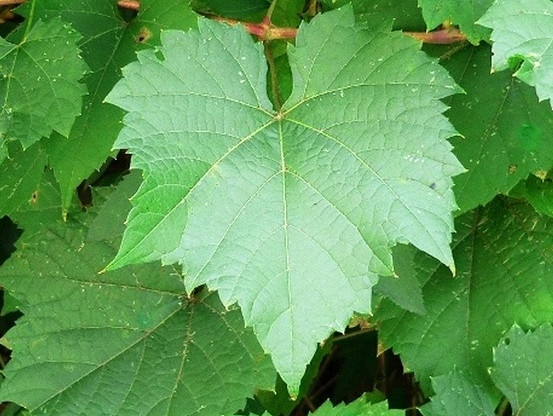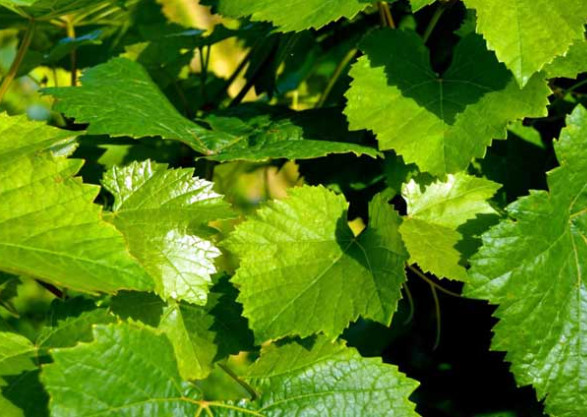The properties, storage, and consumption of grape leaves
There are many benefits to using grape leaves, as well as the fact that they can be used for cooking. You can use its properties to treat various diseases or prepare food with it. You have learned everything you need to know about grape leaves in this article.

Grape leaves: what are they?
The hairy leaves are medium to large, heart-shaped, and serrated at the edges. They grow on vines that can reach heights of 17 meters. The leaves of grapes are usually bright green and have a spicy taste.
Grape leaves have the following nutritional value:
Vitamin C, vitamin E, vitamin A, vitamin K, and vitamin B6 are all found in grape leaves. Additionally, it contains niacin, iron, dietary fiber, riboflavin, folate, calcium, magnesium, copper, and manganese. As a bonus, grape leaves are also great for people who are watching their weight, since each 5 grape leaves only contains 14 calories. Sugar, sodium, and fat are very low in this plant.
Grape leaves have the following benefits:
1. Inflammation can be reduced
Anti-inflammatory properties are found in grape leaves. Grape leaves can be beneficial to those suffering from tonsillitis, arthritis, and chronic gastritis. Grape leaves contain omega-3 fatty acids and antioxidants that reduce inflammation.
2. Regulation of blood height
The low glycemic index of grape leaves makes them ideal for people with diabetes. It is therefore excellent for regulating blood sugar in diabetics. As a result of its high fiber content, this leaf also lowers blood sugar levels.
3. Enhance digestion
Due to the abundant dietary fiber in grape leaves, this plant is excellent for digestion and nutrient absorption.
4. Constipation prevention
The high fiber content of grape leaves reduces the possibility of constipation. As a result of fiber in the diet, digestion is easier and waste is removed from the body more easily.
5. Intestinal mucosa protection
Zinc, a mineral found in grape leaves, is helpful for repairing and protecting the intestinal mucosa. Diarrhea causes damage to the intestinal mucosa, which these minerals quickly repair.
6. Anemia prevention
Iron is found in grape leaves, which prevents anemia. Hemoglobin is formed in red blood cells by iron. Moreover, this plant contains vitamin C, which aids in iron absorption and prevents anemia.
7. Immune system strengthening
The immune system is strengthened by grape leaves, which are rich in vitamin C. Vitamin C keeps the body’s antibodies alert to bacteria and viruses.
8. Defend against free radicals
Grape leaves contain vitamin C, which fights free radicals in the body. Vitamin C protects the body against various diseases by acting as an antioxidant.
9. Cancer prevention
The angora leaf prevents the mutation of cancer cells and the growth of tumors. Free radicals are responsible for this mechanism.

10. Health of the joints
Manganese plays an important role in cartilage building and grape leaves are rich in this mineral. Arthritis is prevented by cartilage, which softens joints and reduces friction.
11. Heart health
Potassium is abundant in grape leaves. Normal heart contractions require potassium. Blood is pumped throughout the body by these contractions.
12. Bone health
Calcium, which is essential for bone health and density, is also found in grape leaves.
13. Health of teeth
Keeping teeth healthy and strong requires calcium. Grape leaves can also be used as a mouthwash to reduce gum inflammation.
14. Muscle cramps can be reduced
Muscle cramps are reduced by the magnesium in grape leaves.
15. The production of collagen
Copper is one of the properties of grape leaves that are beneficial to the skin on the face and body. They provide part of the copper needed to maintain the youth and health of the skin by forming collagen. Additionally, it reduces acne on the face.
16. Health of the skin
Grape leaves also contain a lot of vitamin E. The skin needs vitamin E to function properly. Having younger and clearer skin is possible with regular consumption of grape leaf tea.
17. Nervous system protection
The nervous system is protected by grape leaves, which contain vitamin B. Nerve fiber ends are protected by this vitamin. As a result, the body feels less numb or tingly.
18. Increasing cognitive abilities
The central nervous system is highly dependent on vitamin B6. Vitamin B6 enhances cognitive function and protects the brain. In addition, this vitamin reduces the risk of dementia.
19. Chronic venous insufficiency improves
Venous insufficiency occurs when the body’s veins cannot pump blood properly to the heart. This swelling can be reduced with the extract of this leaf.
It can also fight varicose veins and reduce fatigue, pain and swelling by improving blood circulation.
20. Healing of wounds is accelerated
Grape leaf tea can speed up the healing of cuts and wounds on your body. Antioxidants in grape leaves accelerate wound healing. Antiseptic properties are also found in this plant.
21. Pregnancy that is healthy
This plant contains many nutrients necessary for pregnancy and fetal health. If you are pregnant and allergic to grapes or have diarrhea and intestinal problems.
It can be used and maintained in the following ways:
1. Picking them up
Late spring is the best time to pick them. Choose healthy leaves that have not been sprayed when picking the leaves. Light green leaves should have a flexible texture and light green color. Leaves near the vine and above the tree should be removed. The leaves should be the size of your palm so that you can pour the ingredients into it and easily wrap the leaves around them.
2. freezing
It can be preserved by freezing. Do not wash the leaves in this method. Place the picked leaves in a plastic bag after cleaning them of moisture and dirt. You need to get as much air out of the bag as possible. Before closing the bag, write the date and the number of leaves. It can be stored in the freezer for up to two months. When using frozen leaves under water, there is no need to blanch them.
3. Salt water is used to keep it fresh
It is possible to store it in salt water such as pickle or salt water. Dissolve half a kilo of kosher salt in 4 liters of water. Fill two-thirds of the glass container with salt water. After wrapping all the leaves together, close the lid of the container. Soak all the leaves in salt water. Write the date and number of leaves on the container. Keep the container dry and cool. Before using the leaves, wash them under cold water and blanch them.
4. dry
It should be washed and dried before use. Pass a needle through the junction of the stem and the leaf. Dry the leaves in a cool and dark place. When the leaves are dry, do not crush them and boil for 2-3 minutes after removing the stem. When the leaves are soft, it is ready to use.
It should be consumed in the following ways:
Before using the leaves, make sure they are all washed. To remove excess salt from leaves stored in brine, wash them thoroughly and soak them in water for a few minutes.
In order not to endanger your health, consult a nutritionist or doctor before changing your diet and adding grape leaves to it.
Do not use it in case of allergic reactions.


